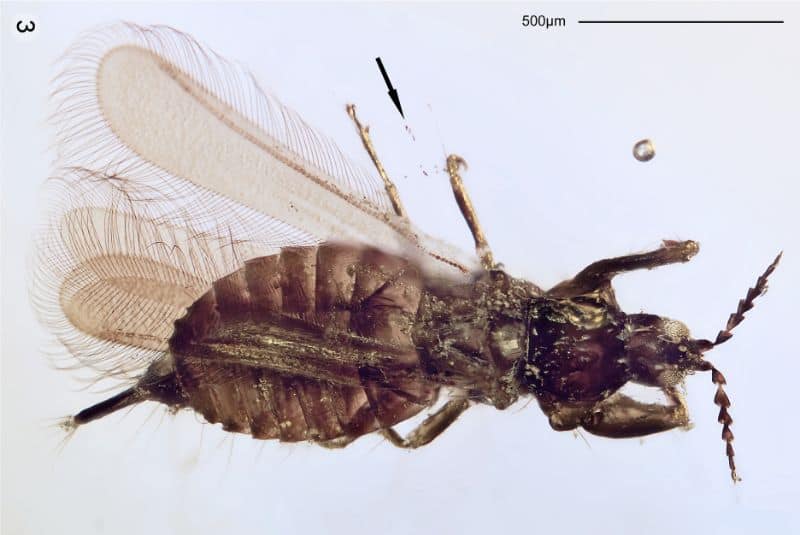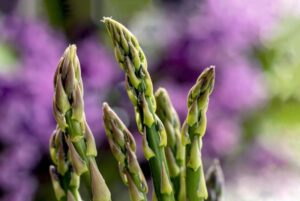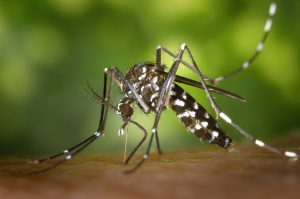Thrips are small, slender insects that can be found feeding on a variety of plants. These pests can cause serious damage to crops, so it is important to understand what eats thrips so you can protect your plants. Read on to learn more.
What Eats Thrips
What Eats Thrips? There are a number of predators that feed on thrips, including spiders, ladybugs, lacewings, and parasitic wasps. You can help protect your plants by adding these beneficial insects to your garden, and by using natural or organic pest control methods.
Green Lacewing
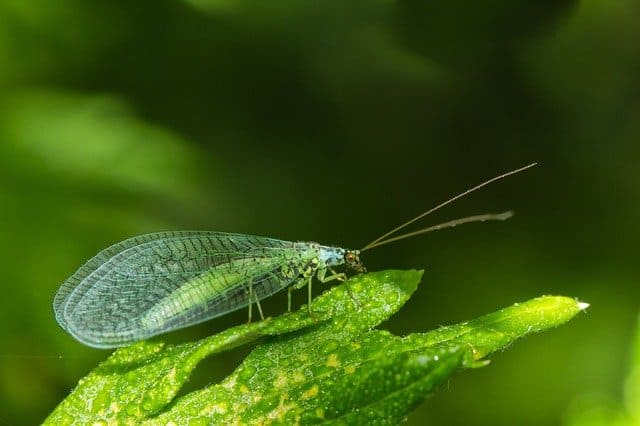
Lacewings (Buy Online) are generally pretty good at controlling insects – including thrips. They’re especially effective against flower-feeding thrips, which often do the most damage to crops. If you have a problem with thrips, releasing lacewings can be a great way to help get rid of them.
Of course, lacewings aren’t the only insects that will go after thrips and you’ll find a complete list of thrip predators that work well together below.
Minute Pirate Bug
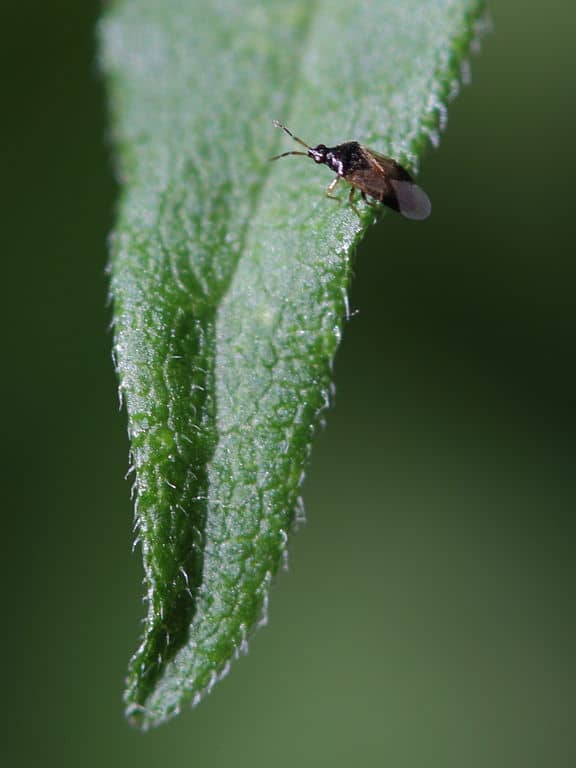
Minute Pirate Bugs are one of the most common predators of thrips. These tiny insects are just 1/8 of an inch long, but they’re voracious hunters that will attack and eat thrips on sight. Minute pirate bugs are easy to identify by their sleder black bodies with brown wings, and they’re commonly found in gardens and greenhouses, where they help to keep thrip populations under control.
Trichogramma Wasp
The Trichogramma Wasp (Buy Online) is a natural predator of thrips. It lays its eggs inside the thrips larvae, and the hatched wasp larvae then eat the thrips insides until they emerge as adults from their bodies. This is a very effective way of controlling thrips populations, and Trichogramma wasps are readily available for purchase online.
Cucumeris Predatory Mites
The Cucumeris Predatory Mite (Buy Online) is a small, orange mite that preys on thrips. It is one of the most successful biological control agents for thrips and has been used commercially for decades. These tiny mites are very efficient at controlling thrips populations, and they can be used in greenhouses and agricultural fields to help keep thrips under control.
Parasitic Nematodes

Parasitic Nematodes (Buy Online) are tiny worms that eat thrips. These nematodes seek out and invade the bodies of thrips, where they feed on the insides of the host insect and reproduce. The offspring then exit the body of their host and search for new insects to infect.
Nematodes are available online, and they can be applied to the soil through irrigation water or applied to the ground around plants. And when used in combination with other methods, nematodes are a good way to control thrips.
Ladybugs – What Eats Thrips
Ladybugs (Buy Online) are voracious predators of adults, nymphs, and larvae of many different types of pests, including thrips. And the release of large numbers of adult ladybugs can be a good form of control for a serious thrip infestation.
Another good way to control thrips is to encourage ladybugs, to visit your garden. You can do this by planting flowers that attract them, like carrots, cosmos, and Nasturtiums.
Spiders – What Eats Thrips
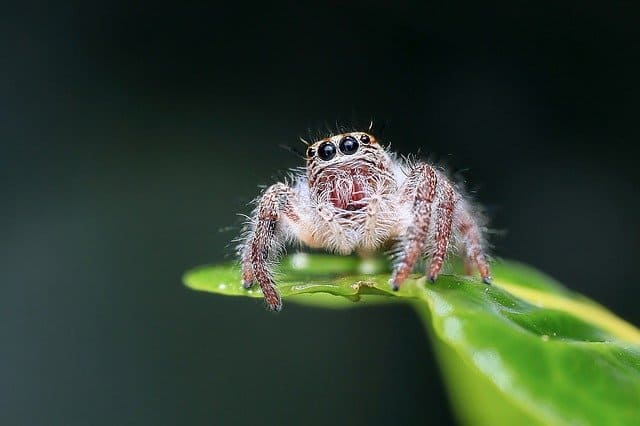
Spiders are natural predators of thrips. They feed on thrips larvae and adults. Some spiders will even build webs in close proximity to thrips-infested plants to capture the insects as they fly by.
How To Get Rid of Thrips Naturally
If you’re looking for a natural way to get rid of thrips, there are a few options available to you.
One option is to introduce predators into your garden. Ladybugs, lacewings, and parasitic wasps all feed on thrips, so encouraging these beneficial insects to take up residence in your garden can help to keep thrips populations in check.
Another option is to use insecticidal soap or neem oil. These natural pesticides will kill thrips on contact, but they must be reapplied regularly to be effective.
Thrip Insecticides
Neem Oil
Neem Oil (Buy Online) works by disrupting the life cycle of the thrips, preventing them from reproducing. It’s also relatively safe for humans and animals, making it a good choice for those who are looking for an eco-friendly option.
Thrips Insecticidal Soap
Insecticidal Soap (Buy Online) is a natural and effective way to kill thrips, and it won’t harm your plants. All you need to do is simply spray it on your plants every few days until the problem is gone. You can also use this method to prevent thrip problems in the future by spraying your plants regularly during the growing season.
Pyrethrin
Pyrethrin (Buy Online) is a natural compound found in certain flowers, and it’s very effective at killing thrips and other small insects. It’s also relatively safe to use around humans and animals, making it a good choice for home gardens. There are a variety of pyrethrin-based insecticides available on the market, so be sure to read the labels carefully to find one that’s right for your needs.
Spinosad
If you’re looking for an effective thrip insecticide, Spinosad (Buy Online) is a great option. This organic compound is derived from a soil bacterium, and it works by causing neurological damage in insects that consume it. While it’s deadly to pests, Spinosad is relatively safe for animals and humans, making it a popular choice for organic farmers and gardeners. When used as directed, Spinosad can be an effective way to control thrip populations.
How to Get Prevent Thrips from Infesting Your Plants
Getting rid of thrips can be a challenge, but there are a few things you can do to control them.
- Keep your garden neat and tidy. This will help to remove places where they can hide and lay their eggs.
- Check your plants for damage. If you see any, remove the affected leaves or flowers.
- Use sticky traps. These will help to catch adult thrips before they have a chance to lay their eggs.
- Spray affected areas with an insecticide. This will kill thrips instantly
By taking these steps, you can help to get rid of thrips.
What Are Thrips?

Thrips are small, slender winged insects that suck sap from plants. They are a serious agricultural pest, as they can cause stunted growth, deformed flowers and leaves, and reduced crop yields. Thrips can also transmit diseases from plant to plant.
What Do Thrips Look Like

Thrips are small, slender winged insects that range in color from straw-colored to black. They have feathery wings, and their bodies are often covered in fine hairs. Thrips are usually less than 1/16 inch long, and they can be difficult to spot with the naked eye.
Thrip Life Cycle
The egg is the first stage of the thrips life cycle. The nymph hatches from the egg and feeds on plant sap. The nymph then enters the prepupa stage followed by the pupa stage, during which it undergoes a final molt and emerges as an adult.
Adults can live for up to 45 days, during which time they will mate and lay eggs for the next generation. In a single year, there can be up to 40 generations of thrips, with each generation producing 20-50 offspring. As a result, the thrip population can grow very quickly if left unchecked.
What Do Thrips Feed On
While different species of thrips have different preferences, most will feed on a wide range of plant materials. This makes them difficult to control, as there are often many potential hosts for these pests to choose from. And they can be found on a wide range of flowers, vegetables, trees, shrubs, and herbs.


